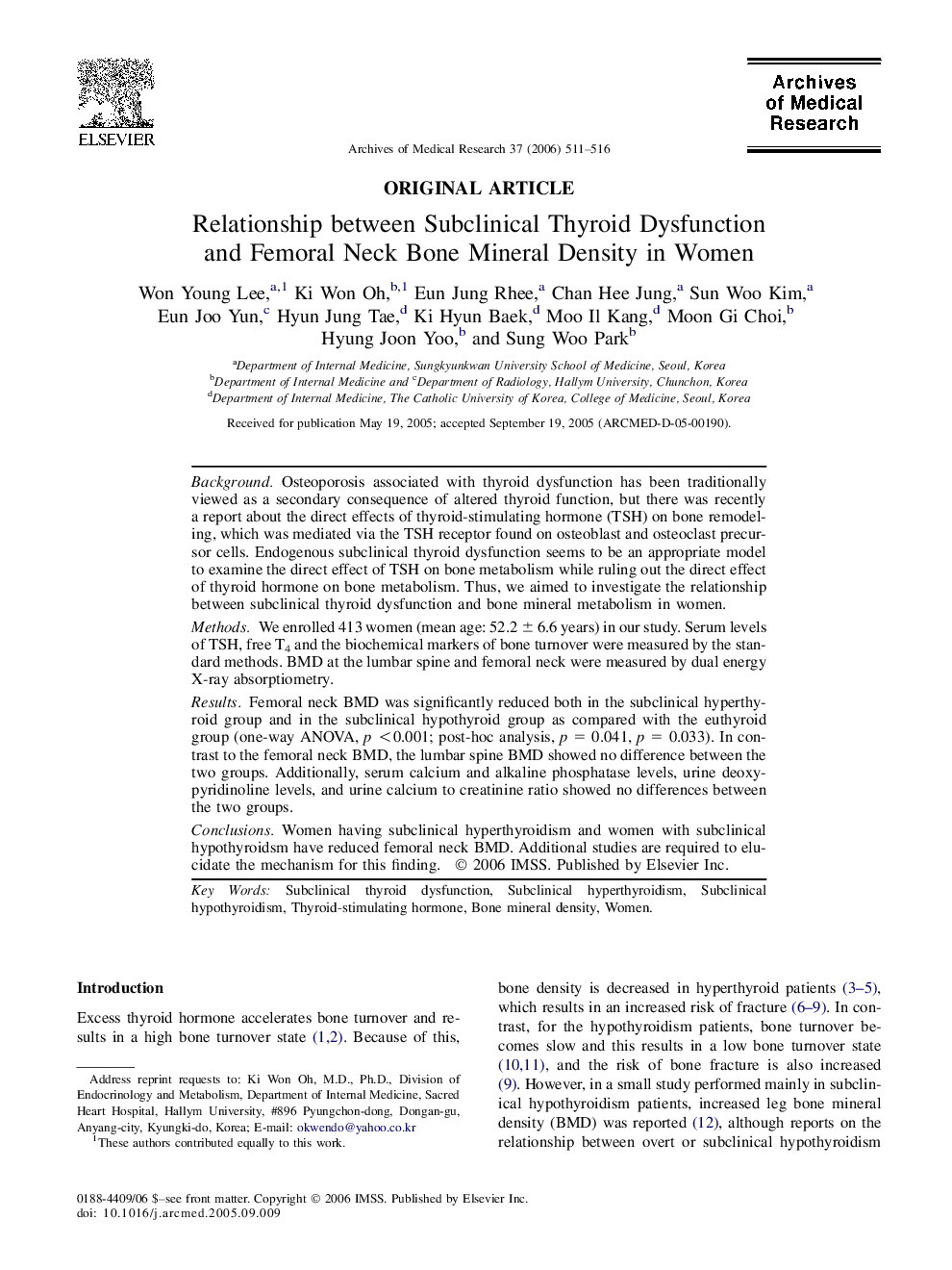| Article ID | Journal | Published Year | Pages | File Type |
|---|---|---|---|---|
| 3447671 | Archives of Medical Research | 2006 | 6 Pages |
BackgroundOsteoporosis associated with thyroid dysfunction has been traditionally viewed as a secondary consequence of altered thyroid function, but there was recently a report about the direct effects of thyroid-stimulating hormone (TSH) on bone remodeling, which was mediated via the TSH receptor found on osteoblast and osteoclast precursor cells. Endogenous subclinical thyroid dysfunction seems to be an appropriate model to examine the direct effect of TSH on bone metabolism while ruling out the direct effect of thyroid hormone on bone metabolism. Thus, we aimed to investigate the relationship between subclinical thyroid dysfunction and bone mineral metabolism in women.MethodsWe enrolled 413 women (mean age: 52.2 ± 6.6 years) in our study. Serum levels of TSH, free T4 and the biochemical markers of bone turnover were measured by the standard methods. BMD at the lumbar spine and femoral neck were measured by dual energy X-ray absorptiometry.ResultsFemoral neck BMD was significantly reduced both in the subclinical hyperthyroid group and in the subclinical hypothyroid group as compared with the euthyroid group (one-way ANOVA, p <0.001; post-hoc analysis, p = 0.041, p = 0.033). In contrast to the femoral neck BMD, the lumbar spine BMD showed no difference between the two groups. Additionally, serum calcium and alkaline phosphatase levels, urine deoxypyridinoline levels, and urine calcium to creatinine ratio showed no differences between the two groups.ConclusionsWomen having subclinical hyperthyroidism and women with subclinical hypothyroidsm have reduced femoral neck BMD. Additional studies are required to elucidate the mechanism for this finding.
